
FIDDLER'S FERRY POWER STATION RAILWAY[Source: Paul Wright]
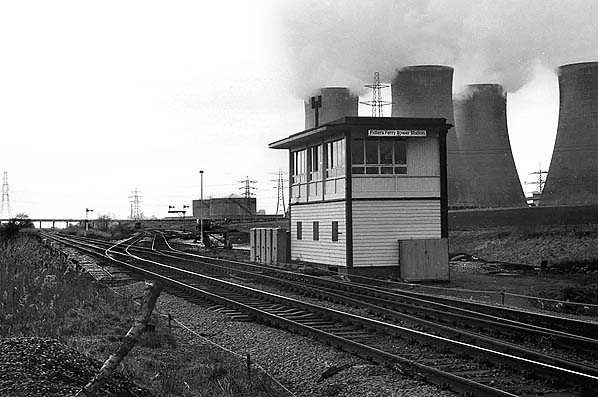 Looking west at the junction between the Garston and Warrington line and Fiddler's Ferry Power station in the 1970s. Fidlers Ferry Power Station signal box which controls the junction is seen to the right of the line. At this time the line leading into the power station was double track.
Photo by Graham Earle 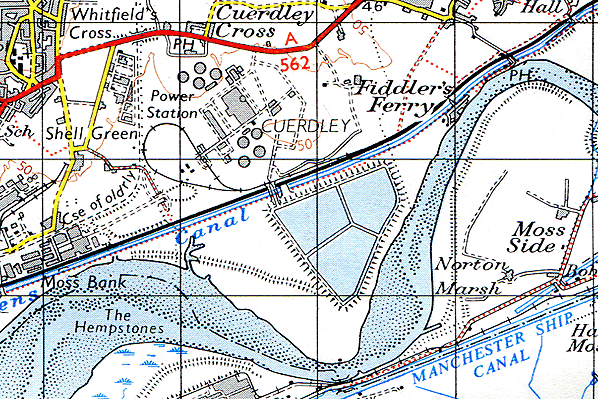 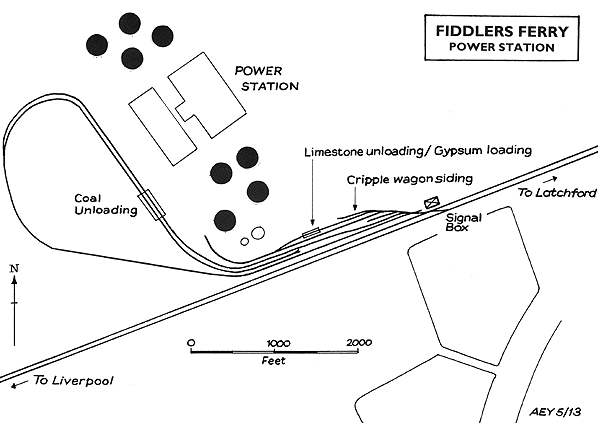 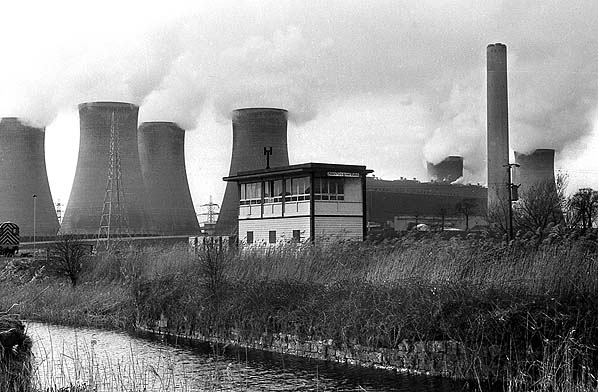 Fiddler's Ferry Power Station seen looking north-west from the south bank of the Sankey canal in the 1970s. On the other side of the canal is Fidlers Ferry Power Station signal box.
Fiddler's Ferry Power Station seen looking north-west from the south bank of the Sankey canal in the 1970s. On the other side of the canal is Fidlers Ferry Power Station signal box.Photo by Graham Earle 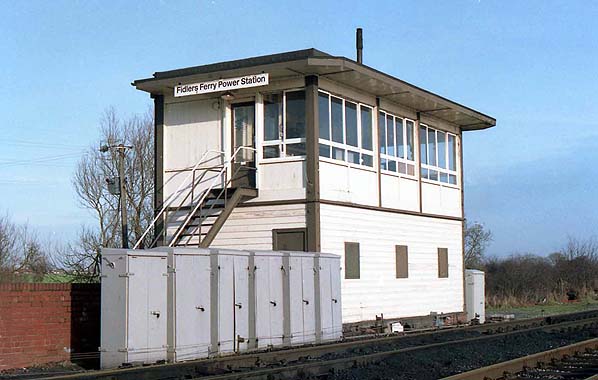 Fidlers Ferry Power Station signal box in the 1980s. Photo by Graham Earle 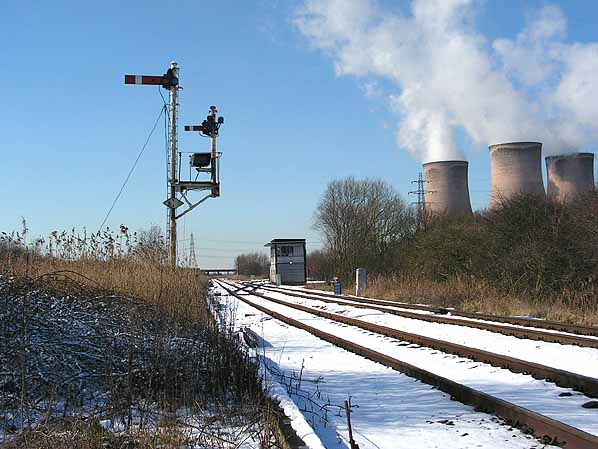
The Fiddler's Ferry Power Station junction looking west on 4 March 2006. By this time the line into the power station had been altered from a double line to a single line.
Photo by Paul Wright .jpg)
Looking east towards the Fidlers Ferry Power Station junction from the power station lines on 20 October 2012. Fidlers Ferry Power Station signal box and the junction with the main line can be seen beyond the signals. The Ferry-go-Round Rail Tour, an unusal visitor to the power station, is seen to the the left waiting for its signal to clear.
Photo by Paul Wright .jpg) The loading/unloading plant for limestone and gypsum trains seen looking west on 20 October 2012. The loading/unloading plant for limestone and gypsum trains seen looking west on 20 October 2012.Photo by Paul Wright 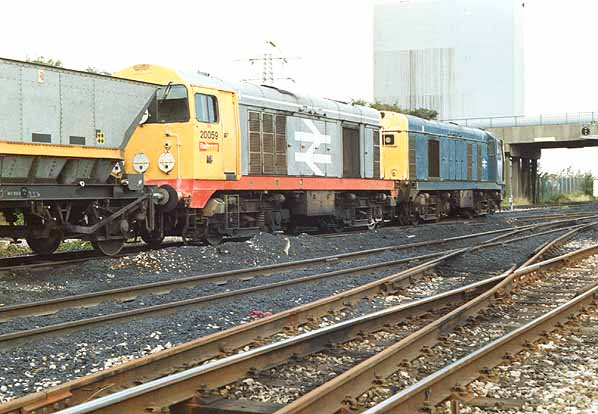 On 8 September 1992 two class 20 locomotives stand at a signal within the power station. The view is looking east and the train had completed a circuit of the mery-go-round loop and discharged its cargo of coal. It would shortly run forward towards the junction with the main line and On 8 September 1992 two class 20 locomotives stand at a signal within the power station. The view is looking east and the train had completed a circuit of the mery-go-round loop and discharged its cargo of coal. It would shortly run forward towards the junction with the main line and then go onward to Warrington. Photo by John Wilson 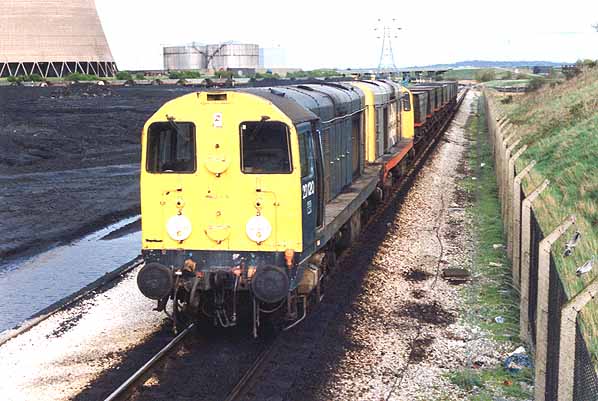 In the charge of two class 20 locomotives a coal train waits on the western side of the merry-go-round loop at Fiddler's Ferry Power Station on 21 April 1991. The view is looking south-east from the signal that is located on that side of the loop. In the distance another train can be seen. It is on the eastern side of the loop and has just passed through the unloading plant.
Photo by John Wilson 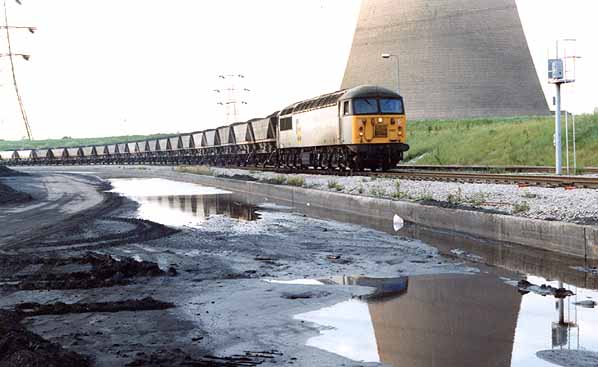
Looking north from inside the merry-go-round loop at Fiddler's Ferry Power Station on 11 June 1992. A class 56 hauled coal train is seen approaching the unloading plant.
Photo by John Wilson .jpg)
The northern end of the merry-go-round loop at Fiddler's Ferry Power Station looking north on 20 October 2012. Coming round the loop is the Ferry-go-Round Rail Tour an unusual visitor to the power station which is usually the domain of freight trains.
Photo by Tony Foster .jpg)
The control of trains on the railway system within Fiddler's Ferry Power Station is under the control of power station personnel. In this view taken on 20 October 2012 a power station employee tells the driver of the Ferry-go-Round Rail Tour what speed the train is to travel at when it passes through the unloading plant. The locomotive at the head of the rail tour, a class 66 locomotive number 66 197, is a type that has been common at the power station since the early 2000s.
Photo by Tony Foster 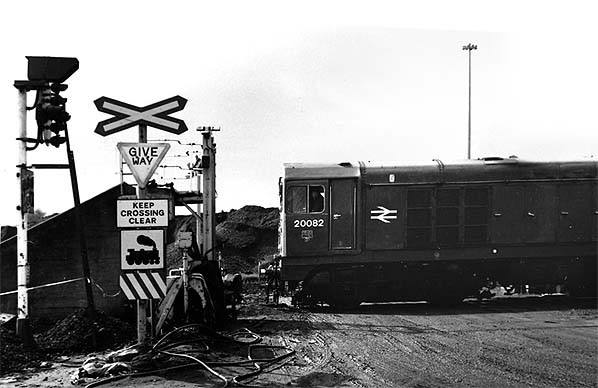 BR Class 20 No.20 082 at Fiddler's Ferry in September 1990. 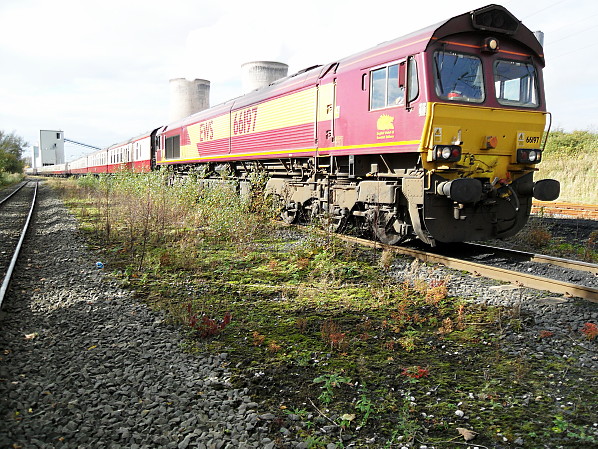 The Ferry-go-Round Rail Tour prepares to depart from Fiddler's Ferry Power Station on 20 October 2012.
Photo by John Wilson
|

 Home Page
Home Page